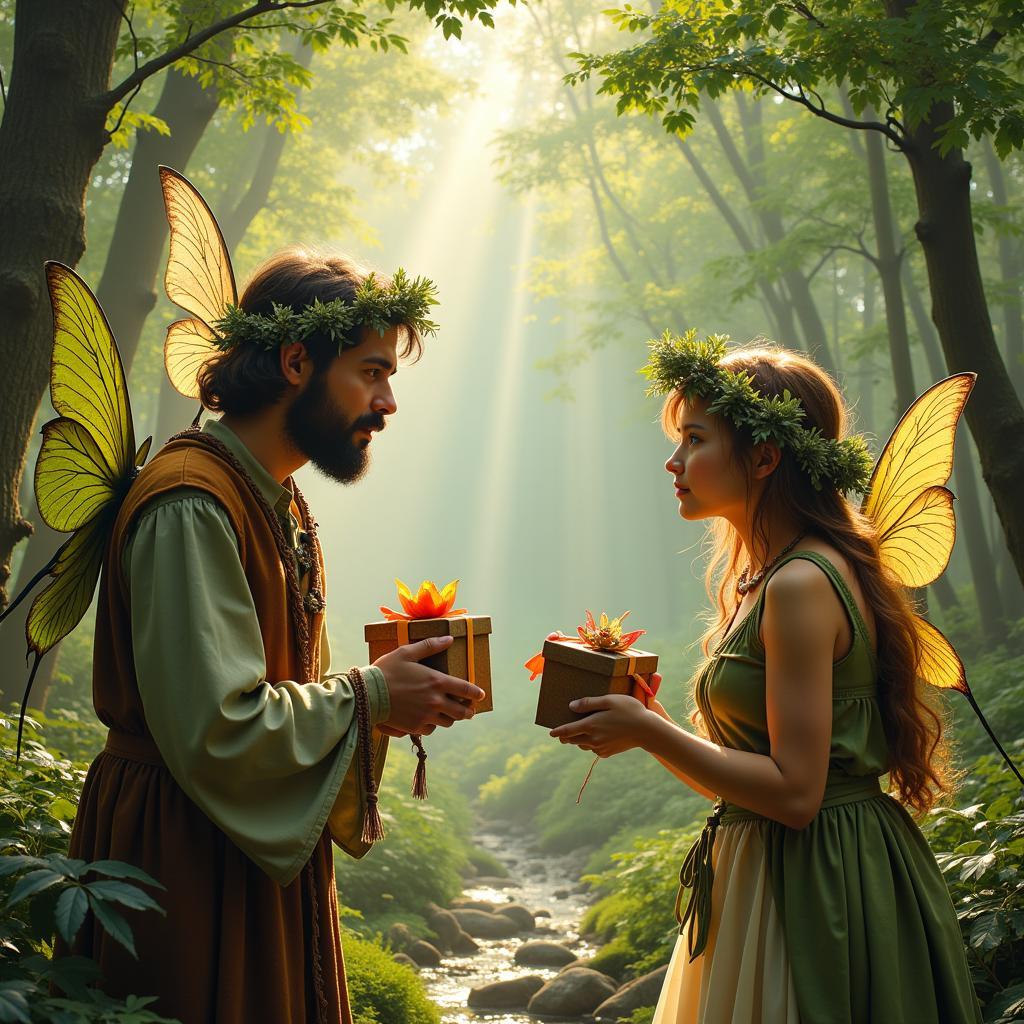Fairy Society, a realm of magic and wonder, has captivated human imagination for centuries. From ancient folklore to modern fantasy literature, these ethereal beings have woven themselves into the fabric of our stories, dreams, and even our understanding of the natural world. But what exactly do we mean when we talk about “fairy society”? Is it a structured civilization hidden from human eyes, or a more fluid concept representing the interconnectedness of nature? Let’s delve into the fascinating world of fairies and explore their captivating social structures.
What constitutes a fairy society can vary greatly depending on the cultural context. Some traditions depict fairies as organized communities with kings, queens, and elaborate courts, much like human societies. Others present them as more solitary beings, guardians of specific natural elements. This diversity reflects the human tendency to project our own social structures and values onto the unknown. The very first fairy tales were likely ways to explain unexplained natural phenomena. After this paragraph, see a related post on the Folio Society Fairy Books.
Different Perspectives on Fairy Society Structure
Hierarchical Fairy Societies
Many depictions of fairy society feature a hierarchical structure. Think of the Seelie and Unseelie Courts in Scottish folklore, with their respective rulers and complex social dynamics. These narratives often reflect human anxieties about power, order, and the consequences of transgression. The idea of a fairy king or queen, dispensing justice and maintaining balance, also resonates with our desire for a just and ordered world.
Nature-Based Fairy Societies
Other traditions view fairy society as inherently linked to nature. In these interpretations, fairies are less concerned with human-like social structures and more focused on maintaining the balance of the natural world. They might be guardians of specific plants, animals, or elements like water and fire. This perspective reflects a deep connection between humans and the natural world, and a recognition of the interconnectedness of all living things. For those interested in the intersection of societies and environmental issues, our article on the Produced Water Society might be of interest.
Fairy Society and Human Interaction
The Dangers of Crossing Paths
Folklore often warns of the dangers of interacting with fairy society. Stories abound of humans being lured into fairy realms, tricked, or punished for disrespecting fairy customs. These tales often serve as cautionary reminders about the power of the unknown and the importance of respecting boundaries. They also speak to the human fascination with the otherworldly and the desire to understand the mysteries that lie beyond our everyday experience. If you’re interested in exploring fictional societies and their challenges, you might enjoy our article on The Society Season 2 Release Date 2024.
Finding Common Ground
Despite the potential dangers, there are also stories of positive interactions between humans and fairy society. These often involve acts of kindness, respect, and a willingness to learn from each other. Such narratives suggest the possibility of bridging cultural divides and finding common ground, even with beings vastly different from ourselves. For a compelling story about navigating different societies, check out Chinese Cinderella and the Secret Dragon Society.
 Human-Fairy Interactions
Human-Fairy Interactions
What Can We Learn from Fairy Society?
The concept of fairy society, in all its diverse forms, offers a rich tapestry of ideas to explore. From social structures to environmental stewardship, these narratives provide a lens through which we can examine our own values and beliefs. They encourage us to question our assumptions about the world and to consider different ways of relating to each other and the environment. For a different perspective on societal themes, explore our article on the Red Shoes Society.
Conclusion
Fairy society, a captivating blend of magic and social commentary, continues to fascinate and inspire. Whether viewed as structured kingdoms or fluid expressions of nature, these narratives offer valuable insights into human imagination and our relationship with the unknown. By exploring the enchanting world of fairy society, we can gain a deeper appreciation for the power of storytelling and the enduring allure of the magical realm.
FAQ
- What are the different types of fairy societies?
- How do fairies interact with humans?
- What are some common themes in fairy folklore?
- Are fairies real?
- What can we learn from fairy society?
- How does fairy society reflect human values?
- Where can I find more information about fairy folklore?
Common Scenarios and Questions
-
Scenario: A child asks if fairies are real.
-
Question: How can I explain the concept of fairy society to a child?
-
Scenario: A writer wants to incorporate fairy lore into their story.
-
Question: What are some accurate resources for researching fairy society?
Further Exploration
Explore other related articles on our website for more in-depth discussions on various cultural and societal topics.
Contact Us
For any assistance or further information, please contact us:
Phone: 02043854663
Email: [email protected]
Address: Khu 34, Bắc Giang, 260000, Vietnam
Our customer service team is available 24/7.